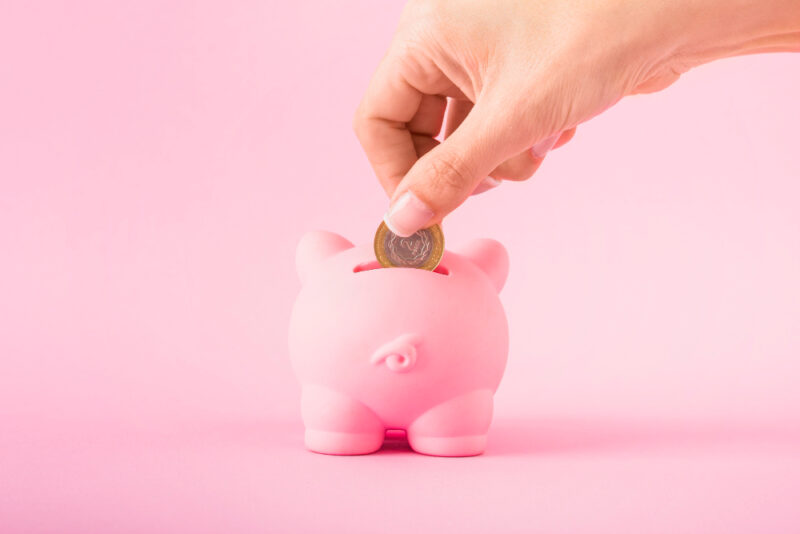At the start of every year, many of us promise ourselves that this will be the year we get serious about saving money.
I’ve been there—feeling like I’m working hard but not seeing the payoff because my money seems to vanish.
If you’ve ever looked at your bank account and wondered, “Where did it all go?” you’re not alone.
But here’s the thing: Spending less money isn’t about cutting out all the joy in your life.
That’s a common misconception.
It’s about taking a good, honest look at your finances and making choices that align with your goals and values.
I remember when I first started paying closer attention to my spending. It wasn’t easy—there were months when I felt overwhelmed, but once I got into the habit of tracking my money and making a plan, it was like a weight lifted.
Not only was I saving more, but I also felt in control of my financial future. That’s what I want for you too: a sense of empowerment and peace of mind.
With that in mind, I’ve put together a practical guide to help you spend less money in 2025.
These are strategies that work because they’re simple, sustainable, and focused on helping you live a better life—not just a cheaper one.
Let’s dive in:
This post may include affiliate links. If you decide to make a purchase, I will make a commission at no extra cost to you.
1. Know Your Income and Expenses

If there’s one thing I’ve learned, it’s that you can’t manage what you don’t measure.
The first step to spending less is knowing exactly how much money is coming in and going out. Take a moment to:
- Write down all your income sources, no matter how small.
- List every single expense you have, including unavoidable bills like electricity, utilities, rent, and groceries. Don’t forget those sneaky subscriptions or smaller costs that tend to add up.
I am currently using the Pocket Expense app on my iPhone. I write down every single expense and income and you can categorize each expense like “Makeup” “Groceries” or “Rent.”
It shows you a pie chart organizing each category into a different color so you can see where most of your money is going.
When I first did this, it was eye-opening.
I realized how much I was spending on things I didn’t even notice.
Once you have these numbers in front of you, create a realistic budget that covers your essentials first.
Knowing exactly what you’re working with makes it so much easier to cut back without feeling deprived.
2. Create a “Needs vs. Wants” List
This step can feel a bit like tough love, but it’s worth it.
Sit down and be brutally honest with yourself about what you truly need versus what’s just a nice-to-have.
Essentials like food, housing, and transportation come first.
Beyond that, ask yourself:
- “Do I genuinely need this?”
- “Is there a cheaper alternative?”
I remember debating whether I really needed multiple streaming services.
Spoiler: I didn’t.
Cutting back on these “wants” helped me save without sacrificing what truly mattered to me.
3. Automate Your Savings
One of the easiest ways I started saving money was by setting up automatic transfers to a savings account.
It felt like paying myself first, and over time, those small amounts added up. Treat your savings like a non-negotiable bill.
Even starting with $20 a week can make a big difference if you stick with it.
4. Cook More, Eat Out Less

This is my #1 Money Saver.
I used to be a regular at my favorite takeout spots, but when I calculated how much I was spending on food, it shocked me.
Cooking at home not only saved me money but also became something I enjoyed.
Try meal planning for the week, experimenting with new recipes, or even prepping meals ahead of time to make things easier.
You’d be surprised how much you can save—and how much healthier you’ll feel.
5. Cancel Unnecessary Subscriptions
This one’s a game-changer.
Take a look at your bank statements and identify subscriptions you’re barely using.
Whether it’s that gym membership you haven’t touched in months or a streaming service you hardly watch, canceling them can free up extra cash.
And remember, you can always resubscribe if you really miss it.
6. Embrace Secondhand Shopping
I used to think buying secondhand meant sacrificing quality, but that couldn’t be further from the truth.
Thrift stores, online marketplaces, and community sales are goldmines for affordable finds.
From furniture to clothes, I’ve scored so many amazing deals by going secondhand.
7. Set Spending Limits for Non-Essentials
Here’s the trick I use: I set a monthly limit for “fun” spending—whether it’s on hobbies, shopping, or entertainment.
Once that amount is gone, I stop.
Using cash or a separate card for these expenses can help you stick to your limit without feeling guilty.
8. Avoid Credit Card Debt

This one took me a while to learn, but avoiding credit card debt is key to saving money.
Pay off your balance in full each month to avoid those nasty interest charges.
If you already have debt, focus on paying down the highest interest balances first.
It’s not easy, but it’s worth it in the long run.
9. Practice “Wait Before You Buy”
Impulse purchases were my kryptonite.
I started following the 24-hour rule: for non-essential items, I’d wait a full day before deciding whether to buy.
Most of the time, the urge passed, and I saved myself from unnecessary spending.
I also add to cart (with Amazon especially) and just leave it there. If I really want it days later, I’ll check out but most of the time, I realize I don’t really need what I’m buying.
10. Look for Free Entertainment Options

Who says having fun has to be expensive?
I’ve discovered so many free or low-cost activities that bring just as much joy.
Community events, hiking trails, library book clubs, or even hosting a game night with friends can be just as fulfilling as costly outings.
I joined the Meetup app and I love joining outdoor events – it’s so much fun and you get to make friends. I have a post on making friends as an adult you might enjoy.
11. Regularly Review Your Finances
This one’s huge.
I make it a habit to sit down once a month and review my budget and spending. It keeps me on track and helps me adjust for any changes.
Think of it as a check-in with your financial goals.
Final Thoughts
Spending less in 2025 isn’t about deprivation—it’s about being intentional and finding a balance that works for your life.
By understanding your finances, making mindful choices, and adopting money-saving habits, you’ll feel more in control and less stressed about money.
Start small, stay consistent, and remember: that every little bit adds up.
You’ve got this!










